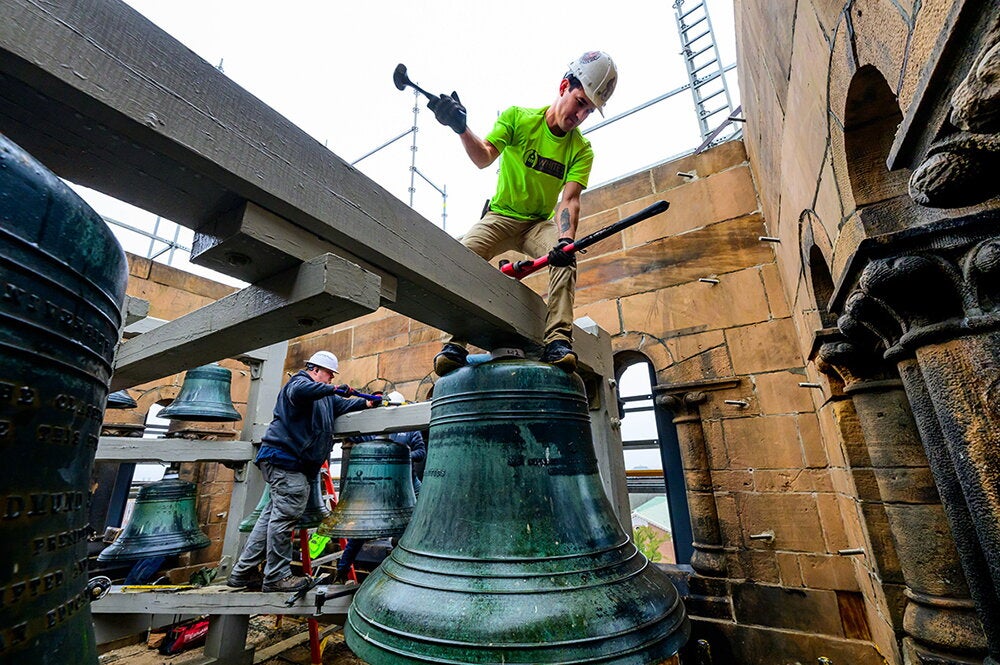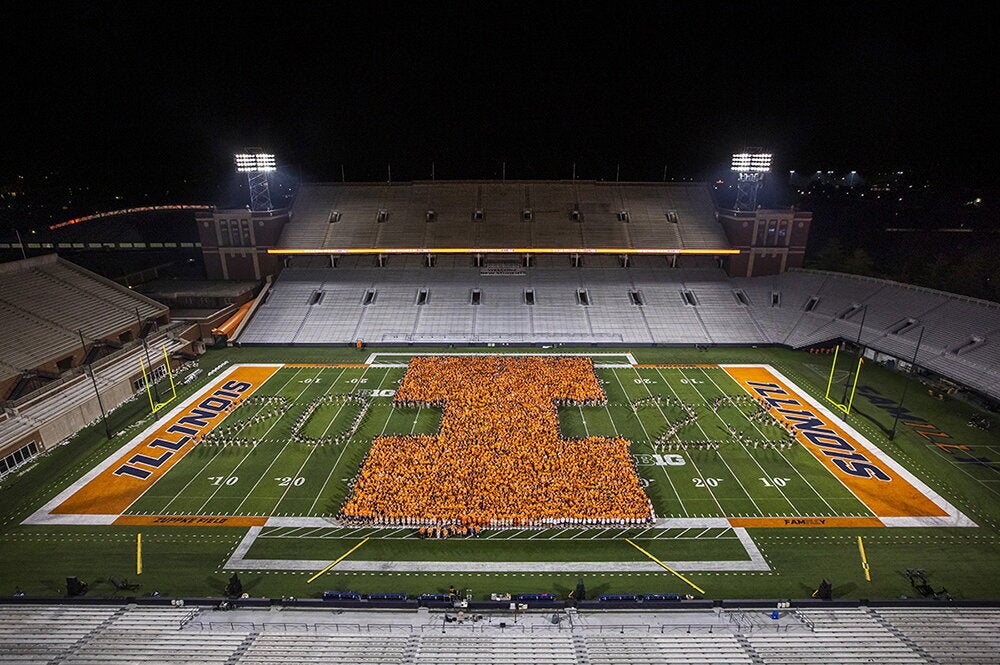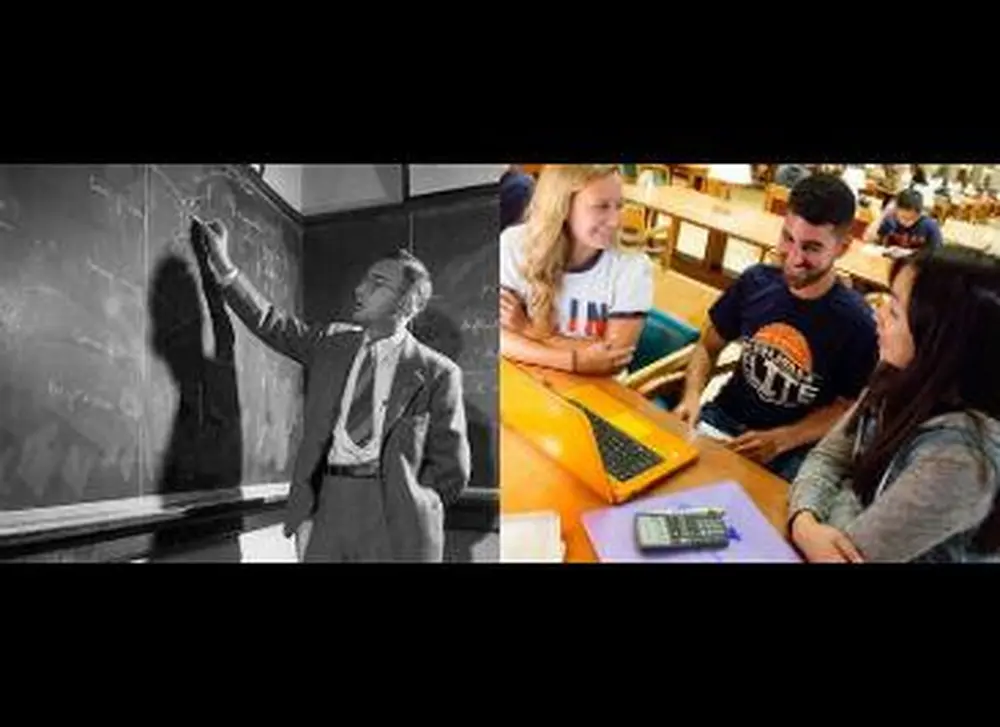
From Long-Hand to Calculators
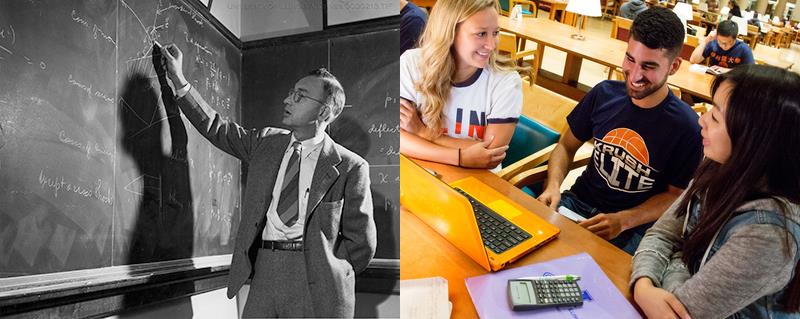
Applied mathematics professor A. H. Taub (at left) writes a shock wave problem on a chalkboard in 1948. Though chalk and erasers are still used in classrooms, these days students also rely on calculators and computers to solve problems.
From Pencil and Paper to Laptops
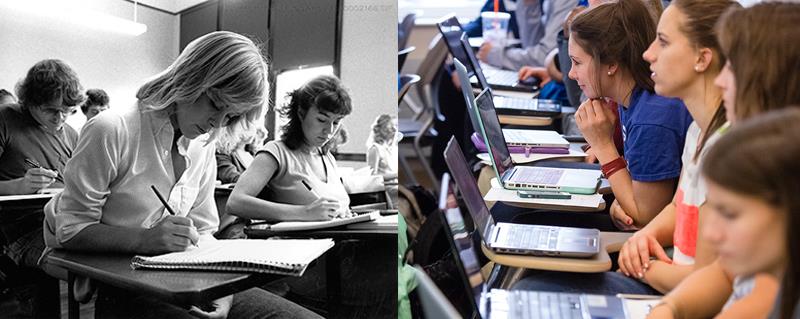
Illinois students used to make sure they had plenty of paper for taking notes in lectures. Today, it’s hard to go far without seeing students on their laptops.
From Antique to Renovated Classrooms
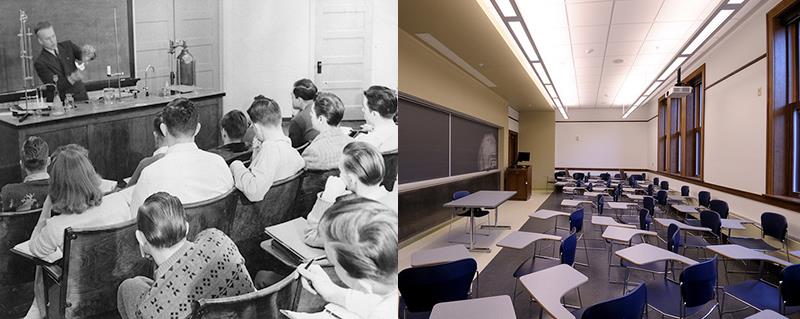
Many classrooms, like this chemistry class in 1938, were designed with fixed seating. Now, students can enjoy flexible classroom spaces with new technology, and reassemble into smaller groups for discussions, such as in the recently renovated Lincoln Hall.
From Slide Projectors to PowerPoint Presentations
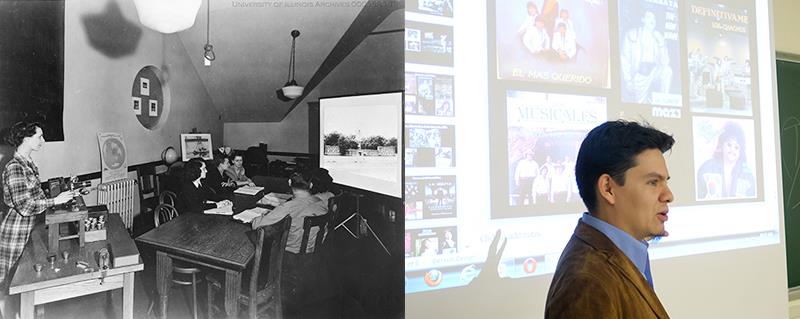
In 1948, students sat patiently while their professors manually changed the slides in their projector in a dedicated audiovisual classroom. Today, professors incorporate PowerPoint and Prezi presentations into their lectures for more visual appeal.
From Teaching Machines to Supercomputers
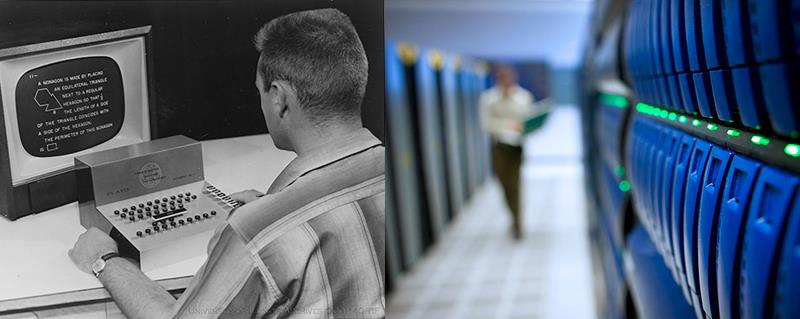
The photo on the left shows a student circa 1960 solving a math problem at a “teaching machine” using PLATO, co-invented by engineering professor Donald Bitzer. The University of Illinois has long been a leader in technology and is home to the National Center for Supercomputing Applications (NCSA, at right). NCSA provides computing, data, networking, and visualization resources and services, and has one of the most powerful supercomputers in the world.
From Card Catalogs to Databases
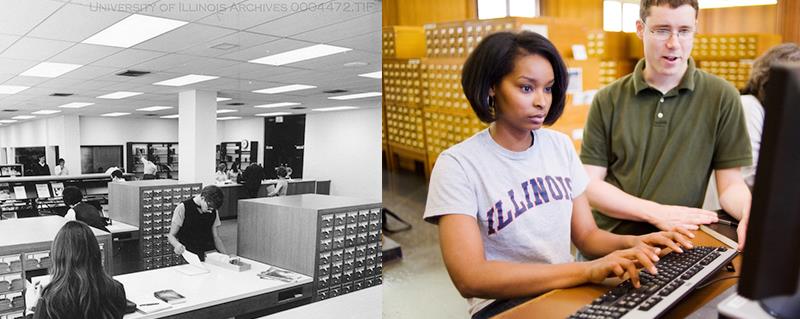
Our excellent libraries have always been a source of pride here at Illinois, and the way we use them has expanded over the years. Pre-Internet days, students had to search through card catalogs to locate books. Now, our libraries have their own online databases that allow you to access their resources from all over campus, and you can even contact them through social media.
From Colossal Computers to Small Smartphones
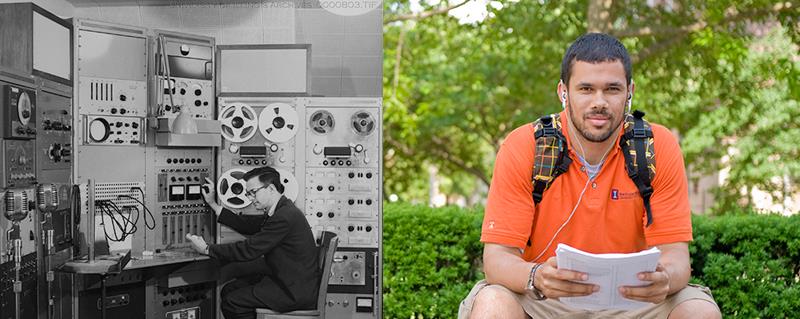
In 1960, faculty member Lejaren Hiller (shown at left, who worked in chemistry and then music) used a computer in electronic music studies at U of I. He was one of the first composers to write music with the aid of a computer. Nowadays, students can have thousands of songs in the palm of their hand, using their smartphones to play music, as well as to listen to lectures and podcasts.
From Around Campus to Around the World
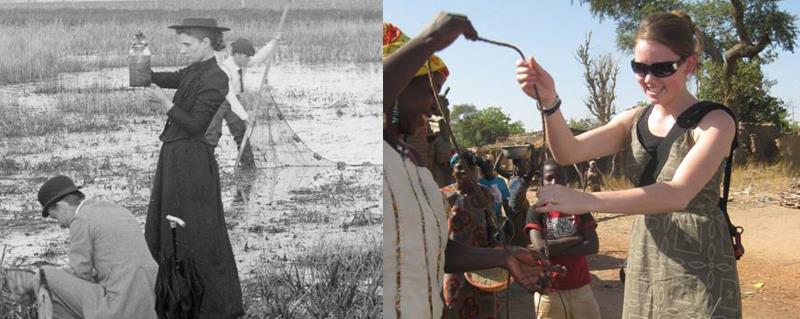
As an Illinois student in 1893, fieldwork meant exploring the marsh off of Lincoln Avenue. As an Illinois student today, you have endless opportunities to learn and travel all around the globe. The photo on the right features an Illinois student in a global studies course abroad in Burkina Faso, learning about economic development in rural Africa.
